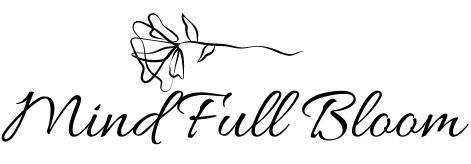
“I… just really… hate myself for being this way,” I sobbed into the arms of my husband. I had just gotten home from my first day at a new job.
This was probably the easiest part-time job I’ve ever had. Yet I was nervous and internally obsessing about what the clients might think about me.
Would I say the right things? Would I be able to handle angry people? What if I made a mistake? What if they think I’m stupid and completely incompetent?
I know these thoughts were absolutely ridiculous. Yet, I couldn’t stop them. I was angry at myself. I judged myself as weak and inferior, compared to those who never obsess about these things.
Judging Ourselves is Painful
The next day after my mini meltdown, I realized something important: judging myself for having anxiety was much more painful than my actual experience of anxiety.
This reminded me of one of my favorite books on mindfulness, Eckhart Tolle’s A New Earth. Tolle says to not take our inner states so personally. Our negative thoughts are merely conditioned habits from our past.
Read Also: How to Mindfully Embrace Fear & Anxiety

Thoughts are Just Made-Up Stories
When you take negative thoughts personally, you make a them part of your identity. This only adds on more negativity and leaves you stuck in a victim mentality.
When you judge yourself harshly you believe you shouldn’t think or feel this way. Then you start believing in a sad story about how you’re more messed up than everyone else.
But none of this is true. Remember these are just made-up stories that make it even harder to let go of bad thought patterns.
How to Stop Taking Your Thoughts So Personally
1. Don’t Believe Every Thought You Think
Remind yourself that how you feel in the moment is not an indicator of the actual truth.
This always happens to me. I’m never going to get better. I can’t handle it. I’m just a fool. It’s always going to be this bad. I won’t be able to perform at my job.
Thoughts like these filled my head during my mini meltdown. But I continued to show up at my new job and found them to be completely untrue.
Since then, I’ve been able to successfully manage and reduce my work anxiety. But if I had listened to my initial thoughts, I would not have had the motivation to continue on.
Read Also: Why the Best Things in Life Have No ‘Meaning’

2. Be the Awareness Behind Your Thoughts
Don’t make your negative inner state into a personalized problem. There’s another option.
Allow it to just be, without judging or resisting it. Without creating a sad, personalized story about it.
See it as something that just comes and goes. It’s merely a feeling or an old pattern. Nothing more. Allow yourself to just be with it, instead of trying to push the uncomfortable thoughts or feelings away.

3. Don’t be so Hard on Yourself
Of course, there are many ways to deal with negative thoughts and emotions. Such as positive thinking, practicing gratitude, meditation, yoga, etc.
However, as I’ve found myself, sometimes these techniques just don’t work.
Sometimes, there is just nothing you can do when you’re deep in a negative emotional spiral. In these moments, the only thing you can do – is just be aware, and let them pass.
When this happens, remember to take it easy on yourself. We all get in negative moods sometimes. Speak to yourself like a kind, compassionate friend would.
Read Also: A Simple Way to Practice Mindfulness

4. Observe Your Thoughts without Judgement
What does it mean to be aware of your thoughts/emotions?
It means that you simply observe, without judging. You ‘watch’ the thoughts and feelings that come up without reacting to them.
Ole’ Eckhart Tolle calls this ‘being the alert presence’ behind whatever thought or emotion you’re experiencing. In this way, you’re not really ‘doing’ anything. You’re not trying to stop, control, or push it away.
Rather, you’re allowing space for it to just be. This stops the cycle of reactivity- which only makes your inner states worse.
Read Also: Best Spiritual Books that Helped Me Live with Purpose

5. Identify Negative Thought Patterns
Notice the negative mental and emotional patterns you experience regularly. This will help you not take them so personally when they come up.
When we feel negative emotions, we tend to believe they’re caused solely by the circumstances in our lives. However, this might not always be the case. Instead, your negative thought and emotional patterns could just be negative habits that you picked up from your parents or a learned coping mechanism.
Chicken or the Egg?
For example, say you’re like me and you’re anxious about starting a new job. You might think it’s the event of starting a new job that’s causing your anxiety.
But what if this isn’t true? What if your anxiety is just a bad habit you picked up? A way you learned to cope with uncertainty, from a young age?
When we feel emotions like sadness, we look for reasons in our lives to justify it. Then we start to focus on all the things we don’t like about our lives and fall into a negative spiral.

Heal Negative Patterns
The best-selling author Wayne Dyer once wrote:
“When you squeeze an orange, what always comes out is what’s inside. Similarly, when you squeeze a person – that is, put pressure on them of any kind – and anger and hatred and stress and depression come out, it isn’t because of who is doing the squeezing or when they do it or how they choose to do it. It’s because that is what’s inside that person.” (Dr. Wayne Dyer, Happiness is the Way)
Read Also: 10 Powerful Ways Mindfulness Changed My Life

What we don’t heal continues to live on within us. The same patterns play out -thoughts, emotions, behaviors. Only when we become aware of them, we can start to let them go.
But first you must stop reacting to them – or taking them personally – which only perpetuates the negative cycle.
6. Remember You Are More Than Your Thoughts
You’re more than just your thoughts. They do not define who you are. Negative thoughts and emotions are things that just come and go. You’re the one who’s aware of them.
But when you label and judge yourself for having negative thoughts or emotions, you create a personalized story around it.
The sad story might be that you’re less than others. Or that you’re a victim. Or that you will never be able to be happy. These are all just thoughts. They’re not the whole truth and you don’t have to believe in them.

7. Let Go of Resistance
Don’t get me wrong – positive thinking is important and has tons of benefits. But sometimes, you just can’t think your way out of negative thoughts and emotions.
So instead of judging your thoughts/emotions, take a step back and just allow them to be. Let go of resistance by allowing yourself to think and feel, while being mindfully aware.
It’s Not Personal
So the next time you find yourself in a negative thought loop – don’t take it so personally. Remember why thoughts are just thoughts. Don’t buy into a sad story your mind will want to make up about them.
Instead, just simply be aware.
And every time you do this, you’ll be better able to see your thoughts for what they really are – just thoughts.





